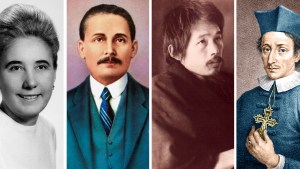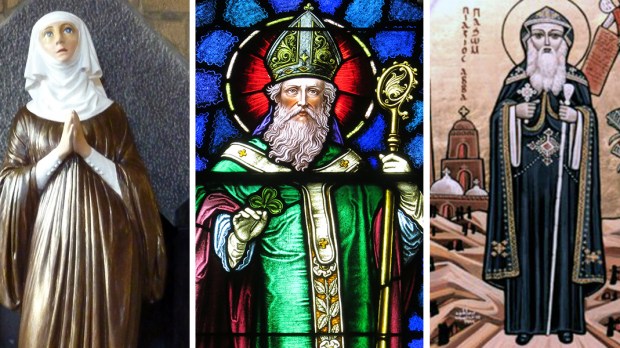As the world continues to stay home in an attempt to slow the spread of COVID-19, many feel overwhelmed by the constant presence of other people — roommates and family members who no longer disperse daily. Others are home alone, missing real life interaction and wondering how on earth they can continue in the isolation caused by social distancing.
For those who are feeling terribly lonely, it can help to look to the saints. Not just the saints who chose a hermit’s life (though they are legion) but saints who were compelled to a life of solitude and found holiness in a life they wouldn’t have chosen.
St. Pachomius the Great (290-346) was born to pagan parents in Egypt; after his conversion, Pachomius planned to become a hermit like all the holiest men of his day. But while he was in the desert, Pachomius heard a call to live in community. The fruit of his time in solitude was the foundation of Christian monasticism. Though Christians had previously lived in loose gatherings of hermits, each lived a solitary life. Pachomius wrote a rule for communal living, thus laying the foundations for all Christian monasticism—and he did it from the discomfort of solitude. By the time of his death, Pachomius had founded at least eight communities, with hundreds (if not thousands) of monks and nuns.
St. Patrick (5th c) was, by his own admission, not much of a Christian before he was enslaved in Ireland. But in the long hours of solitude when he watched his master’s flock, Patrick’s anguish and suffering led him to a profound holiness. Rather than dwell on his suffering, Patrick began to meditate on the goodness of God. After his escape from slavery, Patrick was ordained and ultimately returned to Ireland, a bishop and an unparalleled missionary. Catholic Ireland owes its faith to a young man who was forced into isolation and came out the other side a saint.
St. Alice of Schaerbeek (1220-1250) was known for her intelligence and piety even as a child. She might have become profoundly holy even while living an ordinary life as a lay Cistercian Sister in modern Belgium. But in her teens, the lively, social girl contracted leprosy, a disease that was thought to be so contagious that Alice was compelled to retreat from her community and live in isolation. For the rest of her life, Alice found consolation in the Eucharist, even as she lost her sight and eventually became paralyzed. Though she could no longer enjoy the social life of the convent, she was consoled by visions of Jesus himself, who taught her to suffer well in her solitude.
Bl. John of Vallombrosa (1310-1395) was an Italian Benedictine monk, a scholar whose research into the occult got out of control. Soon, Br. John was involved in necromancy and other types of black magic. When found out, Br. John was unrepentant; he was thrown in the monastery prison for years. It was just the punishment he needed. When released years later, Br. John asked to remain a hermit in his prison cell, saying, “I have learned in this dark and long imprisonment that there is nothing better, nothing more holy, than solitude: in solitude I intend to go on learning Divine things and to try to rise higher.”
Bl. Julia Rodzinska (1899-1945) was a Polish Dominican Sister, a teacher who ran an orphanage and was much loved by her charges. But the order and the orphanage were dissolved by the Soviets, and when the Nazis invaded, Mother Julia was arrested and sentenced to solitary confinement. For a year, she lived alone in a tiny, cramped cement closet, which she turned into a monastic cell. When Mother Julia was eventually transferred to a concentration camp, she hadn’t lost her faith but had been strengthened in her solitude, enabled to lead the other women in prayer (particularly the Rosary) and to serve the Jewish prisoners who were abandoned during a typhus outbreak. Mother Julia eventually died of the disease she contracted while serving.
Venerable Francis-Xavier Nguyễn Văn Thuận (1928-2002) was born to a Catholic family in Vietnam. He was ordained a priest shortly before the beginning of the Vietnam war, and later made a bishop. Six days before Saigon fell to the Communist army, Archbishop Văn Thuận was appointed coadjutor bishop of Saigon. He was soon arrested and spent 13 years in a Communist re-education camp, including nine in solitary confinement. While in prison, he wrote messages of hope on tiny scraps of paper and had them smuggled out to the faithful, who in turn smuggled wine in so that he could celebrate Mass. He used his hand as a chalice with three drops of wine and one drop of water for each celebration. His writings have been compiled and published, a tremendous testimony to the work God can do on us in solitude. After his release, Cardinal Văn Thuận was sent into exile and died in Rome.

Read more:
10 Saints who were leading scientists

